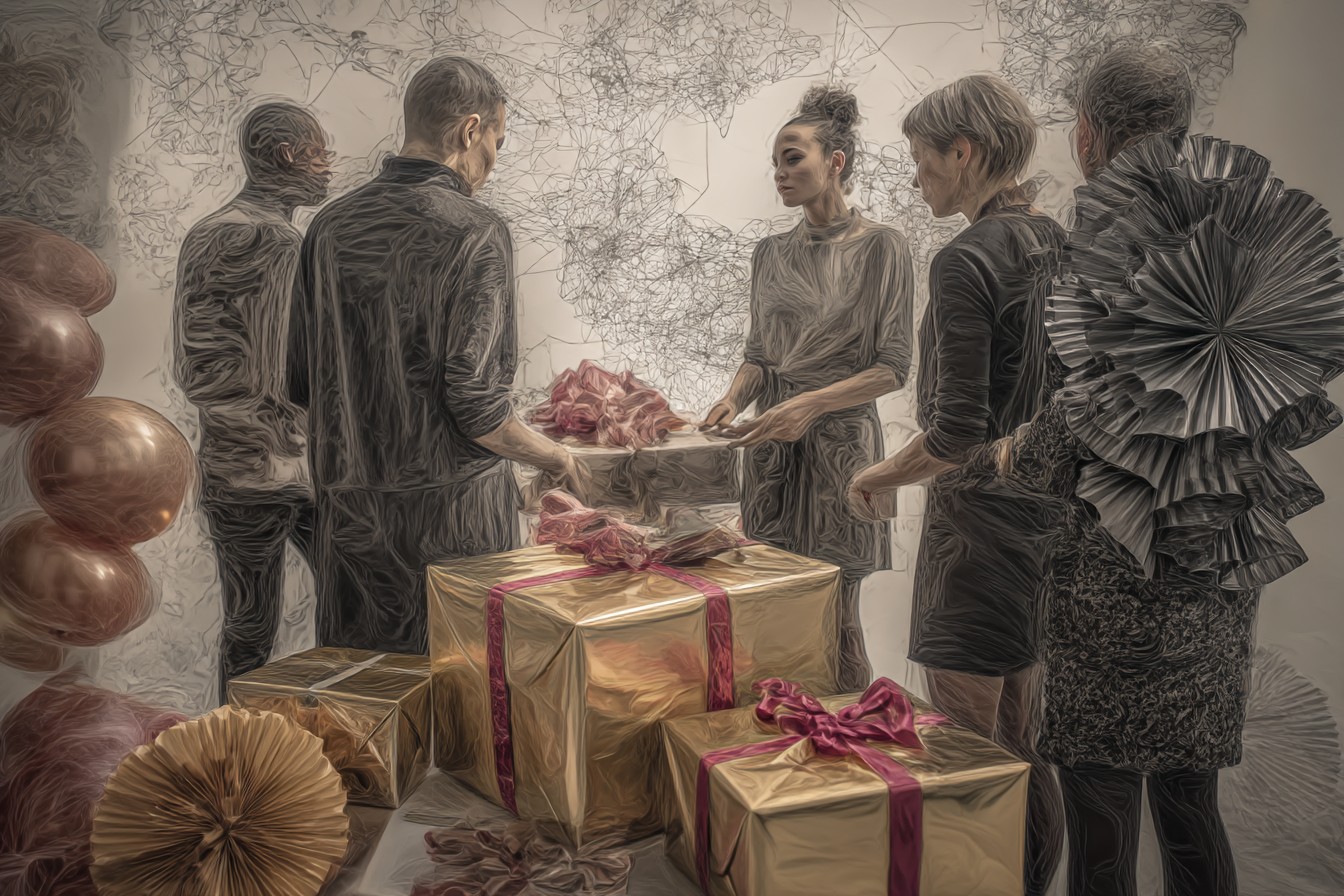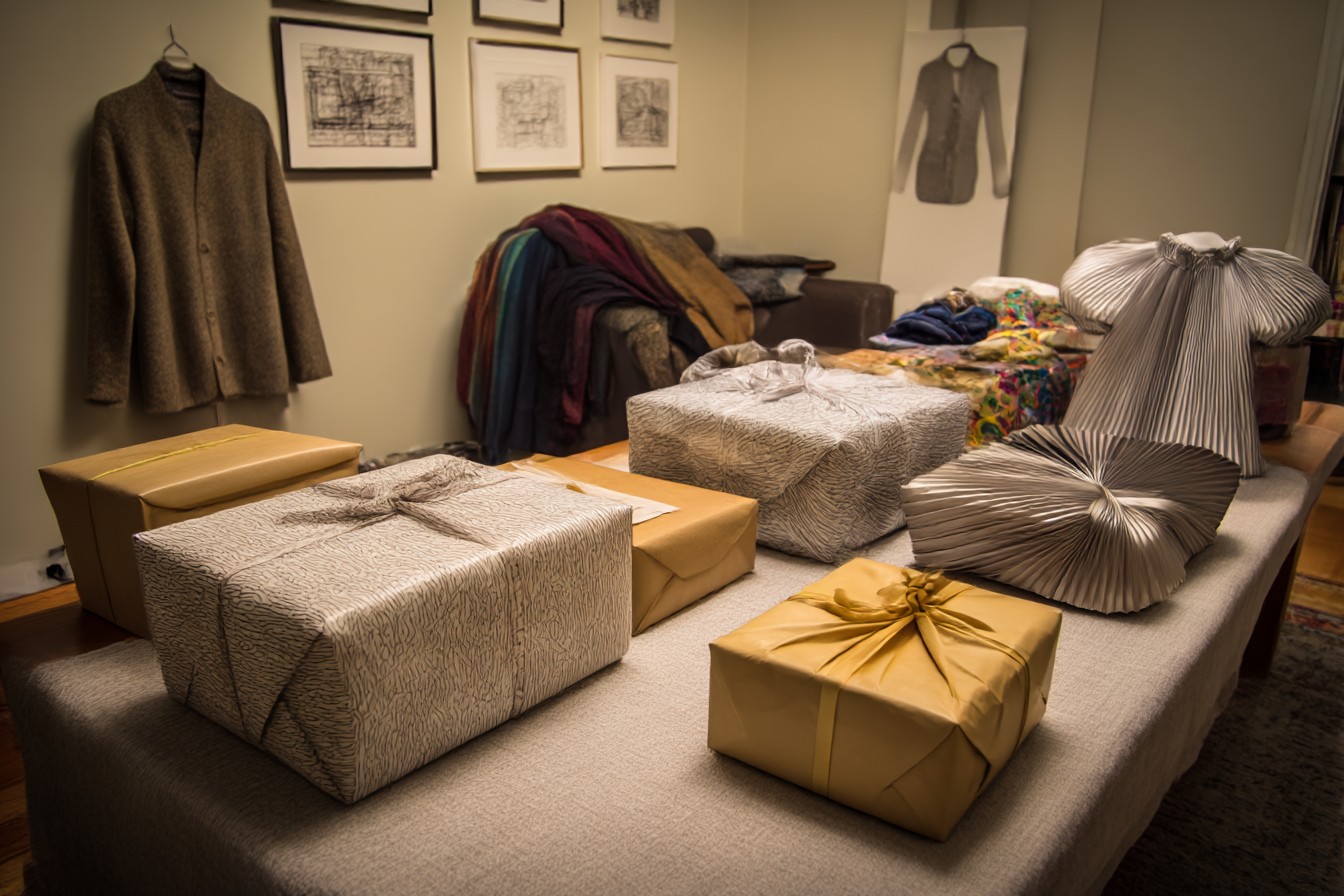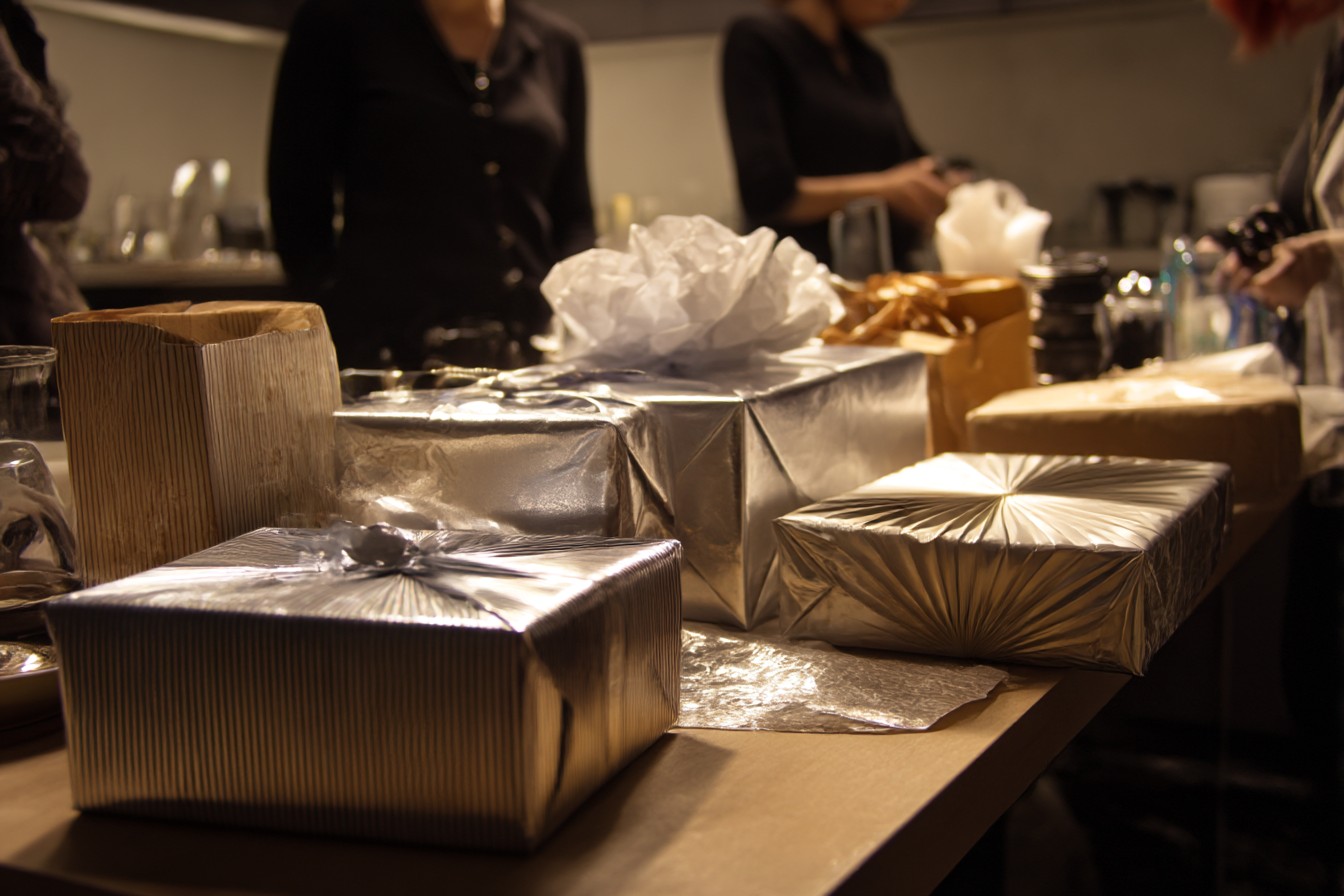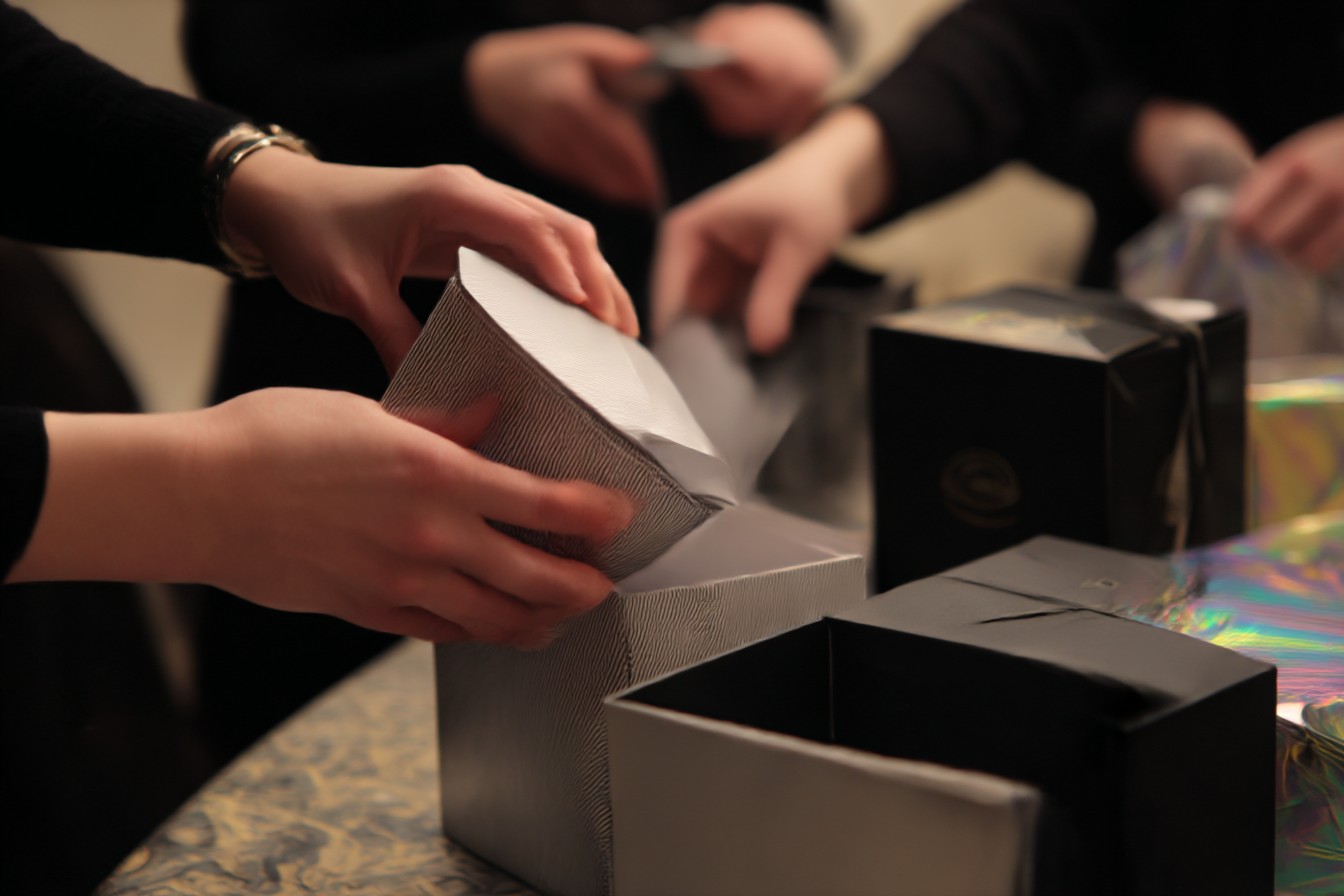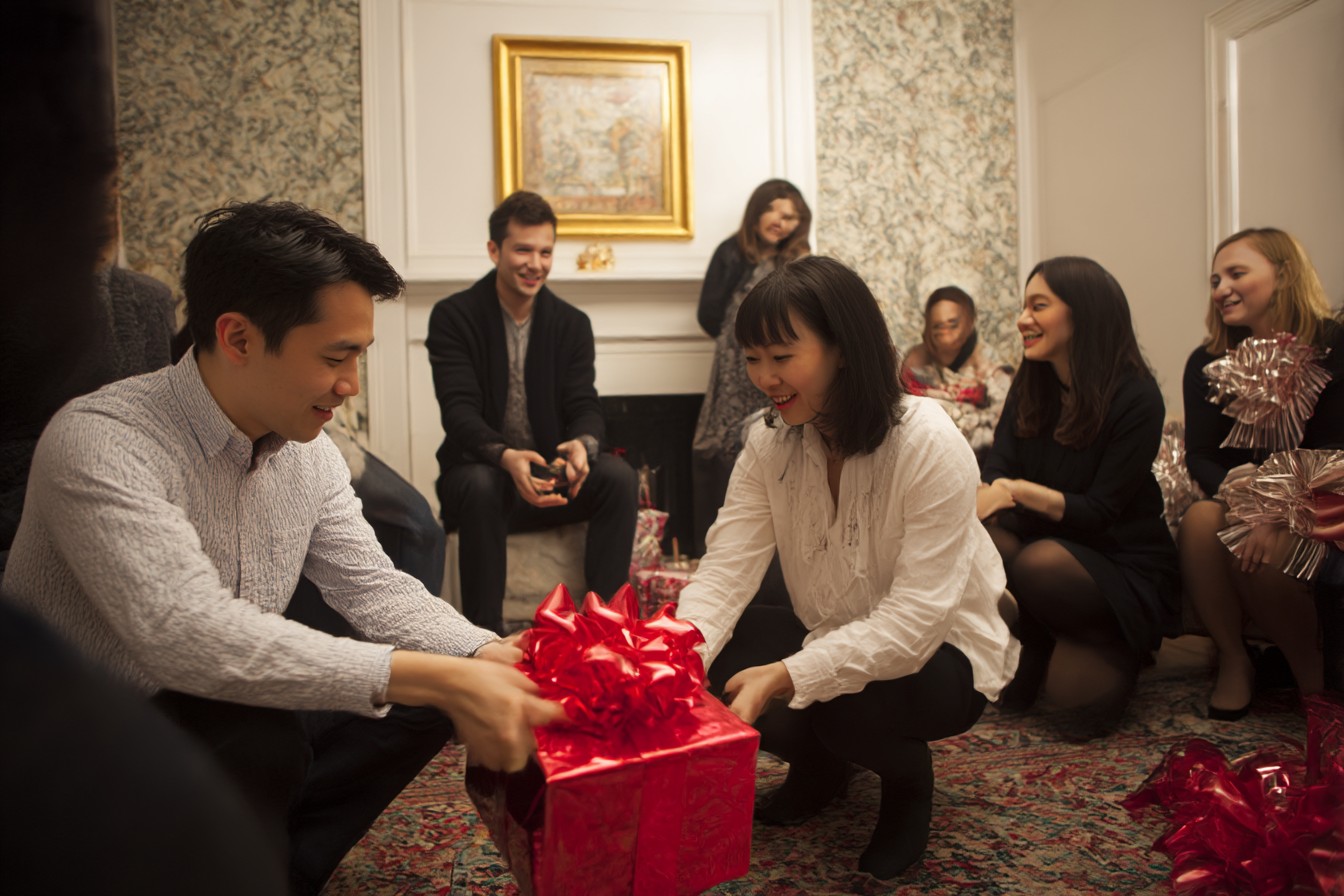I still remember the look on my brother-in-law’s face when he unwrapped a toilet plunger at our family Christmas exchange. The plunger – festively adorned with a red bow, I might add – was my sister’s contribution to our “Something You Need But Would Never Buy For Yourself” exchange theme. Poor Mark turned approximately seven shades of red while everyone else howled with laughter.
“It’s practical!” my sister defended herself between giggles. “Our bathroom sink gets clogged like every other week, and he always uses my makeup brush to fish out the gunk!”
That gift exchange happened eight years ago, and we still talk about The Great Plunger Incident of 2015. More importantly, it launched my fascination with gift exchange formats that go beyond the standard Secret Santa routine.
Look, I love a traditional gift exchange as much as the next person. But after coordinating approximately… oh gosh, I’ve lost count… maybe 50+ gift exchanges for various friend groups, family gatherings, and office parties over the years, I’ve learned that the real magic happens when you shake things up a bit.
The first alternative gift exchange I ever organized was completely born of desperation. It was my second year working at the marketing agency, and I’d been volunteered (read: forcibly drafted) to organize the holiday party. The previous year’s Secret Santa had been, frankly, a disaster. Half the staff forgot to bring their gifts, three people got candles from the same Bath & Body Works sale display, and our creative director received a coffee mug with “#1 Boss” on it – while she was in the middle of performance reviews. Yikes.
I needed something different. Something that wouldn’t break the bank for our underpaid junior staff but would actually be, you know, fun. So I invented what we later dubbed “The Story Exchange.”
Here’s how it worked: Everyone brought a wrapped item that had a story behind it. Not necessarily expensive or fancy, just meaningful. During the exchange, before revealing the gift, each person had to share the quick story behind it. Some brought family heirlooms they were ready to part with, others brought books that had changed their perspective, and a few brave souls brought embarrassing items from their past (our account manager’s high school yearbook photo where he had frosted tips was a particular highlight).
Margaret from accounting brought a small ceramic turtle that had been sitting on her desk for years. “My son made this in kindergarten,” she told us. “He’s 27 now and whenever he visits, he asks if I still have ‘Mr. Shelly.’ I’ve kept it on my desk for twenty years, but I think it’s time for Mr. Shelly to have new adventures.” Our intern ended up with Mr. Shelly and promised regular photo updates. Last I heard, that turtle had been to six countries on three continents.
The Story Exchange flipped the typical gift exchange dynamic on its head. Instead of focusing on the monetary value, we centered the meaning. And honestly? People were way more excited about receiving a beat-up paperback with highlighted passages than they’d ever been about another $15 scented candle.
After that success, I was hooked on alternative gift exchanges. My friend group became my willing guinea pigs as I tested new formats practically every season. Some were spectacular failures (turns out the “Regift Something Terrible You Received” exchange just made everyone feel kind of bad), but others became annual traditions.
One that’s stuck for five years running is what we call the “Thrift Store Treasure Hunt.” Everyone gets a random name and a $10 limit, but here’s the catch – you can only shop at thrift stores, garage sales, or flea markets. The results are hilariously unpredictable. My husband Jake once received a massive painting of a dejected-looking clown that still hangs in our guest bathroom (we call him Melancholy Maurice, and he’s terrified at least three overnight visitors).
What makes this exchange work is the shared adventure of hunting for something weird yet wonderful. The stories of WHERE people found their treasures become almost as entertaining as the gifts themselves. My friend Dana spent three weekends hitting every Goodwill in greater Boston before finding a vintage board game called “What Would You Do?” from the 1980s with questions so inappropriate for modern sensibilities that we turned it into a drinking game.
For my family’s notoriously opinionated holiday gathering (think 25+ strong-willed relatives with extremely diverse political views), I needed something that would build bridges rather than walls. Enter the “Unanimous Gift” exchange.
Here’s how it works: Everyone brings a wrapped gift within the price range (we do $30). All gifts go in the center. The first person picks and unwraps a gift. The second person can either steal that gift OR unwrap a new one. Standard stuff so far, right? But here’s the twist – if someone steals your gift, you can’t just pick a new one. You have to build consensus from the group about which gift to take next. The group gets 60 seconds to unanimously agree on which gift you should choose.
I cannot overstate how chaotic and hilarious this gets. My normally argumentative relatives suddenly find themselves frantically negotiating. “Let Aunt Patricia take the fancy olive oil!” “No, she hates cooking, give her the scarf!” “THE SCARF IS UGLY!” “We have 15 seconds left people, COMPROMISE!”
The beauty of this format is that people genuinely have to consider what others might actually want or need, rather than just what looks good in a wrapped box. And watching my Republican uncle and Democratic cousin frantically working together to decide if my mom would prefer the bluetooth speaker or the wool socks is honestly worth the price of admission.
For smaller, more intimate groups, the “Perfect Match” exchange has been surprisingly successful. This requires more preparation but yields incredibly thoughtful results. Everyone fills out a short questionnaire about their interests, favorite things, and current obsessions. Then names are drawn, and you receive both a person AND their questionnaire. The goal is to find something that perfectly matches something specific from their responses – not just their general interests.
We did this with my book club last year, keeping the budget at $25. The specificity made all the difference. Instead of “Jane likes cooking” leading to yet another random cookbook, Jane’s questionnaire revealed “I’ve been trying to perfect sourdough bread but can’t get the scoring technique right.” This led to her receiving a beautiful bread lame (that’s the fancy knife for scoring bread) with interchangeable blades and a guide to creating different patterns. Her squeal of delight was worth the extra effort.
Of course, not every experimental gift exchange has been successful. There was the “Mystery Box Challenge” where everyone had to create a gift using only items that started with the first letter of the recipient’s name. Great in theory, absolutely stressful in practice. My friend Tara ended up with a truly random collection of items: tape, tongs, tangerines, and a tiny tambourine. We never repeated that one.
Or the time I suggested a “Time Instead of Things” exchange where everyone had to gift an experience or service rather than a physical item. This backfired spectacularly when half the group offered babysitting services but nobody actually needed babysitting, and my well-intentioned offer to organize someone’s closet was met with mild offense. (“Are you saying my closet needs organizing??” Sorry, Rachel, but YES, actually, it did.)
Through years of trial and error, I’ve identified a few key elements that make for a successful alternative gift exchange:
First, crystal clear rules. Nothing ruins a gift exchange faster than confusion. I now create actual printed instruction cards because trying to explain complex rules after everyone has had two glasses of holiday punch is a recipe for chaos.
Second, the right balance of structure and spontaneity. Too rigid, and it feels like a chore. Too loose, and it devolves into a free-for-all. The best exchanges have a framework that guides the process while leaving room for surprise and delight.
Third, appropriate expectations around cost and effort. Some of my most successful exchanges have had the lowest dollar limits but required thought and creativity. We once did a “Found Object” exchange where nothing could be purchased – everything had to be repurposed from what you already owned. The vintage cocktail shaker that had been gathering dust in my cupboard found a happy new home with our friend who’d just gotten into mixology.
And finally, the right exchange needs to match the right group. My rowdy college friends thrive on competitive gift exchanges with stealing and strategic alliances. My more reserved colleagues prefer structured exchanges where everyone ends up feeling valued. My family needs something that generates conversation rather than controversy.
I’ve become something of an evangelist for alternative gift exchanges, to the point where friends now introduce me at parties with, “This is Olivia, she’s weirdly obsessed with gift exchange formats.” Fair enough. But I stand by my obsession because I’ve seen how the right exchange format can transform a perfunctory holiday obligation into a genuinely meaningful experience.
Last December, my cousin Melissa pulled me aside after our family’s Unanimous Gift exchange. “I need to tell you something,” she said, looking uncharacteristically emotional. “This is the first holiday since my divorce, and I was dreading coming. But watching everyone laughing and arguing over which gift I should pick… it reminded me that I’m still part of something. That I still belong here.”
And that, really, is the whole point. The best gift exchanges aren’t actually about the gifts at all. They’re about creating shared experiences, building connections, and making memories that last far longer than whatever comes in the box. Though I must say, Melancholy Maurice the Clown painting has shown remarkable staying power. Jake suggests we “accidentally” break him at least once a year, but I refuse. Some gifts, no matter how hideous, earn their place in your home through the sheer joy of the story they carry.
So if you’re tired of watching people unenthusiastically exchange $15 gift cards this year, I invite you to try something different. You might end up with a toilet plunger or a sad clown painting, but I promise you’ll also end up with stories you’ll be telling for years to come. And honestly? That’s the best gift of all.
Well, that and Mr. Shelly the globe-trotting ceramic turtle. That little guy is living his best life.
